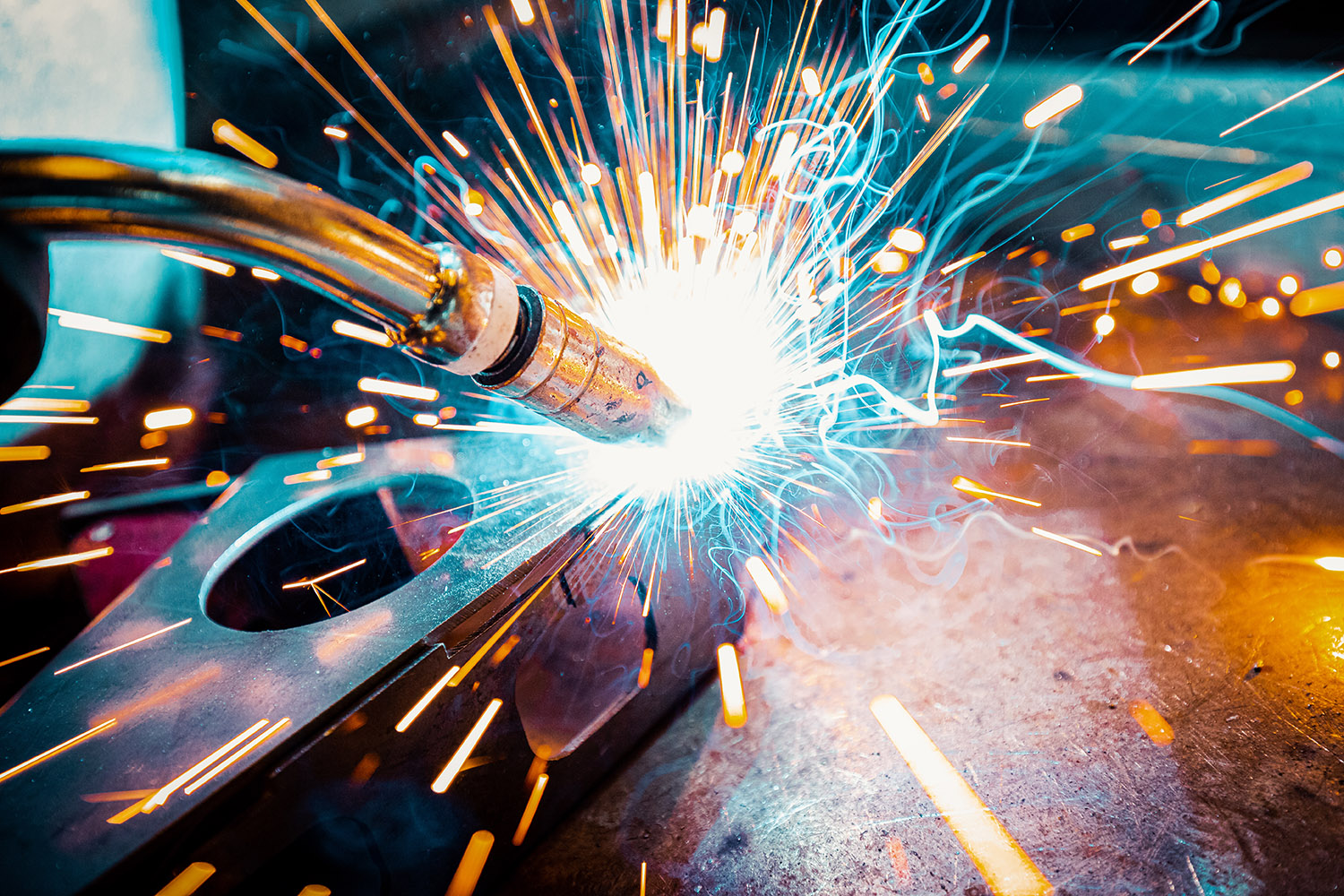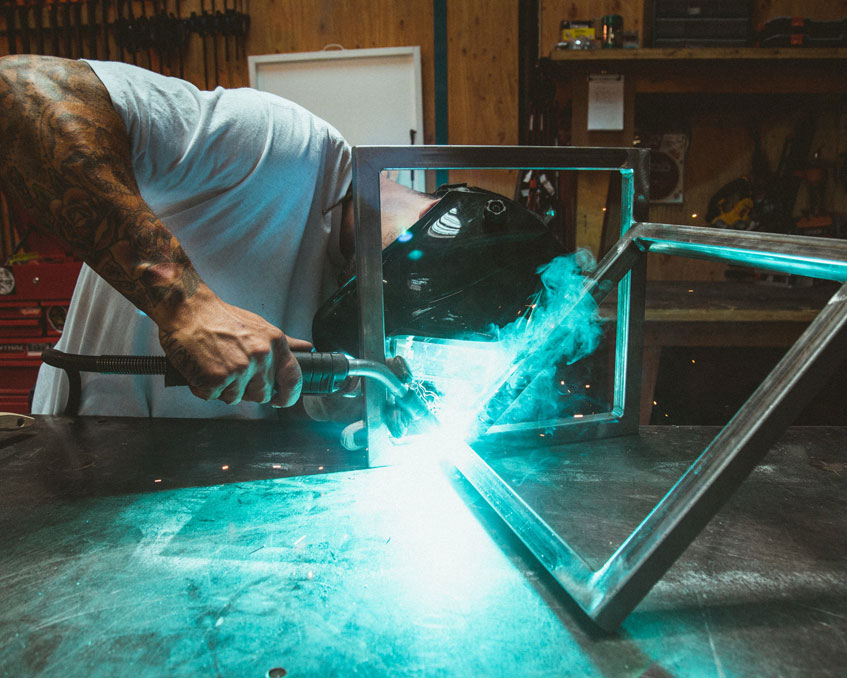Common Welding Repair Issues and Just How to Address Them Properly
Welding repairs usually experience a variety of issues that can threaten the stability of the last item. Usual troubles include insufficient penetration, porosity, and imbalance, among others. Each defect presents unique difficulties that need specific strategies for resolution. Recognizing these problems is necessary for welders intending to boost their end results and skills. This conversation will certainly discover these typical welding repair work concerns and reliable methods to resolve them.
Poor Penetration
Insufficient penetration happens when the weld steel stops working to completely fuse with the base material, causing weak joints and possible structural failings. This issue usually stems from insufficient warmth input, incorrect electrode angle, or inappropriate welding rate. Welders might experience insufficient penetration because of a miscalculation of the needed specifications for a particular material thickness or kind. In addition, contamination on the base material's surface area can impede reliable bonding, aggravating the trouble. To address inadequate penetration, welders should guarantee suitable settings on their devices and maintain a tidy work surface area. Routine inspection of welds is recommended to identify any kind of deficiencies early, enabling prompt modifications and the prevention of endangered architectural honesty in welded assemblies.
Porosity
Porosity is a typical defect in bonded joints that shows up as small gas bubbles entraped within the weld steel. This defect can compromise the integrity of the weld, causing decreased toughness and possible failing under tension. Belgrade. Porosity generally arises from contamination, wetness, or incorrect welding methods, which enable gases to escape into the liquified weld pool. To deal with porosity, welders need to assure appropriate surface area preparation, preserve a clean workplace, and utilize suitable welding specifications. Furthermore, selecting the right filler product and shielding gas can minimize gas entrapment. Routine inspection and screening of welds can help determine porosity early, guaranteeing timely corrective activities are taken, consequently protecting the high quality and dependability of the welded structure
Misalignment
Misalignment in welding can emerge from various elements, consisting of incorrect configuration and thermal development. Recognizing the source is important for effective resolution. Numerous modification methods are readily available to realign components and assure structural stability.
Root causes of Imbalance
Welding misalignment usually originates from a range of underlying concerns that can jeopardize structural stability. One main reason is improper fit-up of components prior to welding, which can result in voids and uneven surfaces. Variants in thermal development throughout the welding procedure can likewise cause distortion, especially if the products being joined have various coefficients of expansion. In addition, poor clamping and fixturing may stop working to hold components firmly in position, bring about movement throughout welding. Poorly conserved tools, including welding makers and devices, might present inconsistencies in the weld grain, further adding to imbalance. Driver error, stemming from inadequate training or experience, can likewise play a considerable function in developing misaligned welds.

Adjustment Techniques Available
Addressing misalignment properly calls for a combination of corrective strategies tailored to the certain concerns at hand. One usual approach is the use of components or jigs to hold components in the appropriate placement throughout welding, making sure consistent placement. In addition, preheating the products can help in reducing distortion and boost fit-up. For substantial imbalance, mechanical adjustment techniques, such as making use of hydraulic jacks or clamps, can be used to correct the position prior to welding. Post-weld warm therapy might likewise be needed to relieve stress and anxieties brought on by misalignment. Finally, mindful examination and modification throughout the arrangement stage can stop imbalance issues from becoming significant issues, promoting a smoother welding process and enhancing total architectural honesty.
Distortion
Distortion is a typical obstacle in welding that can develop from various aspects, consisting of unequal heating and air conditioning. Recognizing the reasons of distortion is crucial for executing reliable prevention methods. Addressing this concern not just enhances architectural integrity but additionally improves the overall quality of the weld.
Root causes of Distortion
When based on the extreme heat of welding, products often undertake adjustments that can bring about distortion. This phenomenon largely emerges from thermal expansion and contraction throughout the welding procedure. As the weld location warms up, the material expands; upon cooling, it contracts, which can create internal anxieties. On top of that, uneven heating across a work surface can exacerbate these anxieties, causing bending or flexing. The type of product likewise plays a significant function; steels with varying thermal conductivity and coefficients of development may respond in different ways, causing uncertain distortions. Bad joint layout and inadequate fixturing can add to misalignment during welding, raising the possibility of distortion. Understanding these causes is vital for reliable welding repair work and avoidance approaches.
Prevention Techniques
Reliable prevention strategies for distortion during welding emphasis on regulating warmth input and guaranteeing appropriate joint style. Keeping a constant warm input aids to reduce thermal growth and contraction, which can result in distortion. Using techniques such as pre-heating the work surface can likewise reduce the temperature gradient, promoting consistent home heating. In addition, picking suitable joint designs, such as T-joints or lap joints, can boost security and minimize stress focus. Carrying out appropriate fixturing to secure the work surfaces in position better aids in maintaining placement throughout the welding process. Finally, staggered welding sequences can disperse warm a lot more equally, protecting against local distortion. By using these techniques, welders can greatly hitbox welder reduce the possibility of distortion and enhance the overall top quality of their welds.
Breaking
Splitting is a common problem run into in welding repair services, typically arising from different factors such as improper cooling rates, product selection, or insufficient joint preparation. The occurrence of cracks can substantially jeopardize the integrity of the weld, leading to prospective failings during procedure. To resolve this concern, welders need to first evaluate the origin, guaranteeing that materials work and properly selected for the particular application. Additionally, controlling the cooling rate throughout the welding procedure is essential; fast air conditioning can cause stress and anxiety and bring about splitting. Appropriate joint layout and preparation likewise add to lessening the risk. Implementing these methods can boost weld quality and sturdiness, eventually decreasing the chance of cracking in ended up weldments.

Insufficient Combination
A substantial concern in welding repairs is insufficient blend, which takes place when the weld steel does not properly bond with the base product or previous weld passes - Welding. This issue can lead to weaknesses in the joint, potentially jeopardizing the integrity of the bonded structure. Elements contributing to incomplete fusion include not enough heat input, improper welding technique, and contamination of the surface areas being joined. To resolve this issue effectively, welders ought to assure appropriate pre-weld cleaning and surface prep work, as well as readjust their welding criteria to achieve ample infiltration and combination. Regular evaluation throughout the welding process can likewise assist identify incomplete combination early, allowing for timely restorative procedures to improve the total quality of the weld
Overheating
While welding repair services can improve architectural honesty, overheating offers a substantial obstacle that can bring about product deterioration. Too much warmth throughout welding can modify the mechanical buildings of metals, leading to reduced strength, increased brittleness, and bending. This phenomenon is especially critical in high-stress applications where architectural integrity is vital. Identifying overheating can include aesthetic assessments for staining or distortion, in addition to checking temperature during the welding procedure. To reduce the threats linked with overheating, welders ought to employ suitable methods, such as managing warmth input, changing traveling rate, and using ideal filler materials. Additionally, executing pre- and post-weld warmth treatments can help recover material residential or commercial properties and improve the general quality of the repair, ensuring long-lasting performance and safety.
Often Asked Concerns
What Are the Typical Indications of a Welding Defect?

How Can I Examine My Welds for Top quality?
To check welds for top quality, one go to my site can utilize visual examinations, ultrasonic screening, and radiographic approaches. Each technique assures structural integrity, recognizes defects, and verifies adherence to defined criteria, inevitably enhancing the dependability of the welded joints.
What Safety Preventative Measures Should I Take While Welding?
When welding, one ought to focus on safety by using proper individual safety equipment, making sure proper ventilation, safeguarding combustible materials away, preserving a tidy work space, and being aware of environments to avoid accidents and injuries.
Can I Fix a Weld Without Redesigning the Entire Joint?
Repairing a weld without redoing the entire joint is possible, relying on the damages (Welding). Strategies such as grinding, adding filler material, or making use of a welding process can effectively attend to particular defects while preserving the surrounding structure
What Tools Are Crucial for Reliable Welding Repairs?
Important tools for efficient welding repairs consist of a welding maker, cord brush, grinder, safety gear, clamps, and filler products. Each tool plays an essential function in making certain top quality and safety look these up and security during the repair service process. Porosity normally emerges from contamination, moisture, or inappropriate welding methods, which allow gases to get away into the liquified weld pool. Inadequately conserved tools, including welding devices and devices, may introduce disparities in the weld bead, further contributing to misalignment. When subjected to the extreme heat of welding, products typically undergo adjustments that can lead to distortion. Fracturing is an usual issue come across in welding repair work, frequently resulting from different variables such as improper cooling prices, product option, or inadequate joint prep work. A substantial problem in welding repairs is incomplete fusion, which happens when the weld steel does not adequately bond with the base material or previous weld passes.